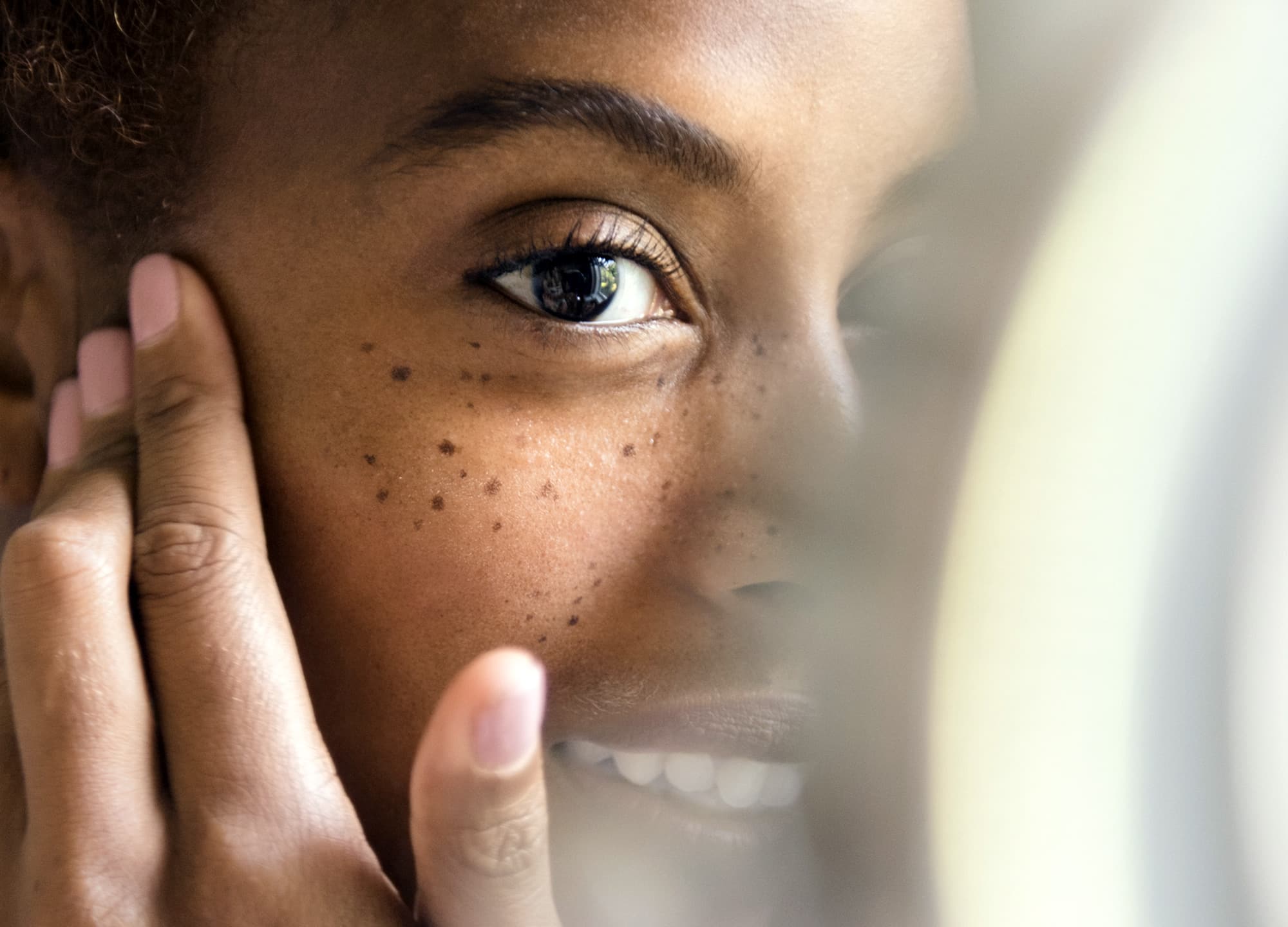A poor night’s sleep is one reason for stubborn dark circles around the eyes. But what’s to blame when you’ve had a solid eight hours of shut-eye and they still don’t disappear? Though sleep (or a lack thereof) is often considered the culprit, it’s just one factor behind the darkening of the eyelids and skin around the eyes. Genetics, inflammation, and sun exposure can also play a role in its development—but the good news is: It is possible to to get rid of dark eyelids.
What causes darkness around the eyes?
There are a few reasons for darkness around the eyes and eyelid discoloration. First, establish if the darkened appearance is caused by actual change in the skin or if it’s reflective of another condition. “Dark under-eye circles may have a component of volume loss, causing shadowing and a hollowed look,” says Seattle physician Dr. Kristine Brecht. On top of that, visible blood vessels, caused by a combination of eye strain and the thinning skin that accompanies age, can also contribute to a darkened appearance. But if the actual skin appears darker, that’s hyperpigmentation. “Hyperpigmentation around the eyes is too much melanin, in an irregular pattern,” explains London physician and Cosmetic Eye Clinic founder Dr. Uche Aniagwu.
Your production of melanin, the brown pigment in skin, can go into overdrive for a number of reasons. One is genetics. “Oftentimes, this darkening of the skin around the eyes can be due to hereditary skin patterns,” says Dr. Aniagwu. Darkness around the eyes tends to be more common among certain demographics, including women and those who have a Fitzpatrick skin type of III or above, he says.
Beyond genetics, sun damage is the primary cause of hyperpigmentation around the eyes. It damages the skin’s repair system, according to Dr. Aniagwu, which can lead to an overproduction and buildup of melanin. Inflammation from allergies or even a sinus infection could also be a factor. “Low-level allergies can cause hyperpigmentation without making it obvious you’re even allergic,” he notes. And finally, melasma, a condition common during pregnancy, can appear around the eyes. If you’re pregnant and notice darkening eyelids and eyes, that could be the culprit.
How to treat eyelid discoloration
For the loss of volume that causes shadows around the eyes, thus darkening their appearance, the solution is straightforward: restore volume with hyaluronic acid–based injectable fillers. “These will target dark circles that are caused by shadows and the sunken, hollowed-out appearance of eyes,” says Dr. Aniagwu. Plus they come with a bonus: a 2007 study found that the hyaluronic acid in filler can spur the body’s own production of collagen, providing both short- and long-term benefits. For treating the eye area in particular, Dr. Brecht is a fan of Belotero, a brand of hyaluronic acid–based filler. “It can help bring back volume with much less swelling than other fillers may attract,” she explains.
For discoloration concerns, Dr. Brecht recommends microneedling enhanced with platelet-rich plasma, or PRP, derived from your own blood. “PRP helps stimulate your own body’s healing potential,” she explains. That includes strengthening skin, regulating collagen production, and promoting healthy skin tone—including that around the eyes. This not only evens out and lightens the hyperpigmentation around the eyes—by fortifying thinning skin, it also reduces the appearance of visible blood vessels that can make the area appear darker.
Eye cream is also a good bet for treating dark eyelids and discoloration. “[Cosmetic serums and creams] tend to contain different ingredients that promote the lightening of the eye area,” Dr. Aniagwu says. “Sometimes that’s retinol, other times it’s vitamin C.” You can find retinol in Murad Retinol Youth Renewal Eye Serum, which is safe to use even on the eyelids and instantly brightens the area with mica. Farmacy Cheer Up Brightening Eye Cream offers three forms of vitamin C, which works by inhibiting melanin production, and four varieties of hyaluronic acid, to hydrate and plump the area.
Last but not least, be sure to apply sunscreen to your lash line and your eyelids on a regular basis. “This may not necessarily stop you from developing dark circles but will give you the best chance of avoiding them,” he says.











